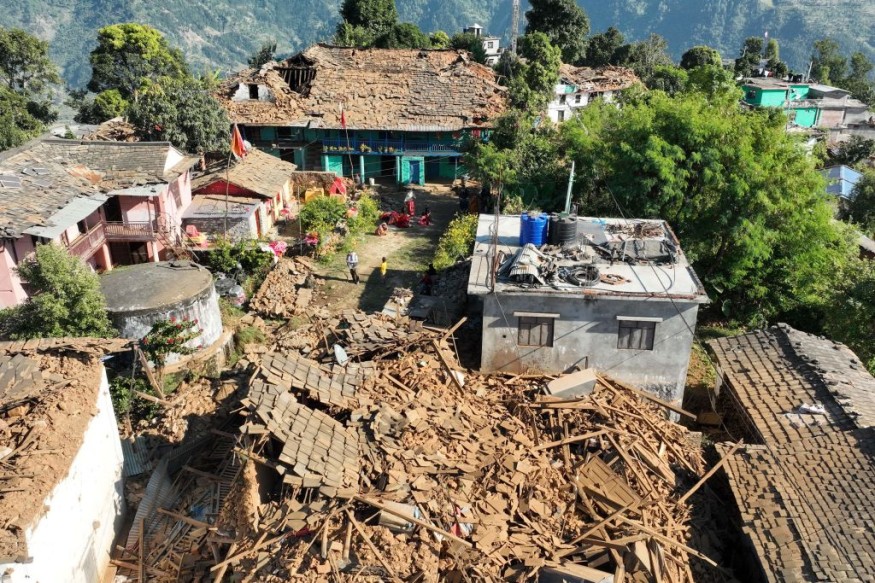A powerful earthquake claimed the lives of more than 150 individuals in the western portion of Nepal.

Authorities said that the 5.8 magnitude earthquake struck Karnali and Lumbini provinces in western Nepal at 11:47 p.m. on Friday, November 3.
They noted that strong tremors were even felt far away in the Nepalese capital and in cities across neighboring India, including Delhi.
Jampacked Hospitals
Due to the effects of the strong earthquake, hospitals and medical facilities have been filled with wounded individuals. Officials said that at least 375 individuals have been hurt amid the quake.
They said that some victims have had to be airlifted as far as Kathmandu, however, officials are concerned and worried about getting others out after nightfall.
After the major earthquake, three more tremors were felt by residents within an hour.
Local officials had called on residents to stay outside for at least 24 hours as they warned that minor aftershocks could still be felt in other areas.
Through a social media post, Honorable Prime Minister Pushpa Kamal Dahal "Prachanda" has already expressed his "deep sorrow over the human and material damage caused by the earthquake at Ramidanda in Jajarkot at 11:47 on Friday night."
जाजरकोटको रामीडाँडा केन्द्रविन्दु भएर शुक्रबार राति ११ः४७ मा गएको भूकम्पबाट भएको मानवीय तथा भौतिक क्षतिप्रति सम्माननीय प्रधानमन्त्री पुष्पकमल दाहाल “प्रचण्ड”ले गहिरो दुख व्यक्त गर्दै घाइतेहरुको तत्काल उद्धार र राहतका लागि ३ वटै सुरक्षा निकायलाई परिचालित गर्नुभएको छ।
— PMO Nepal (@PM_nepal_) November 3, 2023
Furthermore, Nepal's leader already directed the country's three security agencies to mobilize their assets for the immediate rescue and relief of the earthquake victims.
A cabinet meeting has been expected to decide whether to accept foreign assistance for the relief and rescue of the victims as many countries, including Nepal's neighbors China and India, had already vowed to provide humanitarian assistance to those affected by the powerful earthquake.
At present, authorities' search and rescue operations are being hampered and delayed by roads that had been blocked by landslides, which were brought by the quake.
Children, Families At Risk
Alice Akunga, UNICEF Representative to Nepal, expressed the agency's heartfelt condolences to the people and children who have lost their loved ones following the natural disaster.
She said the full extent of the damage would unfold in the coming days, noting that the numbers of those affected and casualties are likely to grow.
"Children and their families are most at risk after the earthquake and several aftershocks damaged and destroyed houses, schools and health centers. Estimates indicate that thousands of school aged children live in the affected areas and will be impacted," Akunga said.
Akunga said that UNICEF teams are on the ground, providing urgent assistance to children and families in need.
Moreover, along with authorities and partners, UNICEF is also assessing the toll on children and families.
The agency is also gauging the support they require at this crucial juncture in the areas of health, nutrition, education, water, sanitation and hygiene (WASH), child protection and social protection.
So far, the UNICEF has already dispatched emergency supplies to the most affected areas in Jajarkot and Rukum West districts, including over 1,000 tarpaulins and 1,300 blankets.
Officials noted that the latest disaster was the largest earthquake to impact Nepal since the 7.8 magnitude earthquake in 2015.
It came in the aftermath of a 5.3 magnitude earthquake in the western district of Bajhang in October when over 15,000 households had been affected.
Related Article : 8 Most Disastrous and Deadliest Earthquakes From the Last Decade
© 2025 NatureWorldNews.com All rights reserved. Do not reproduce without permission.





